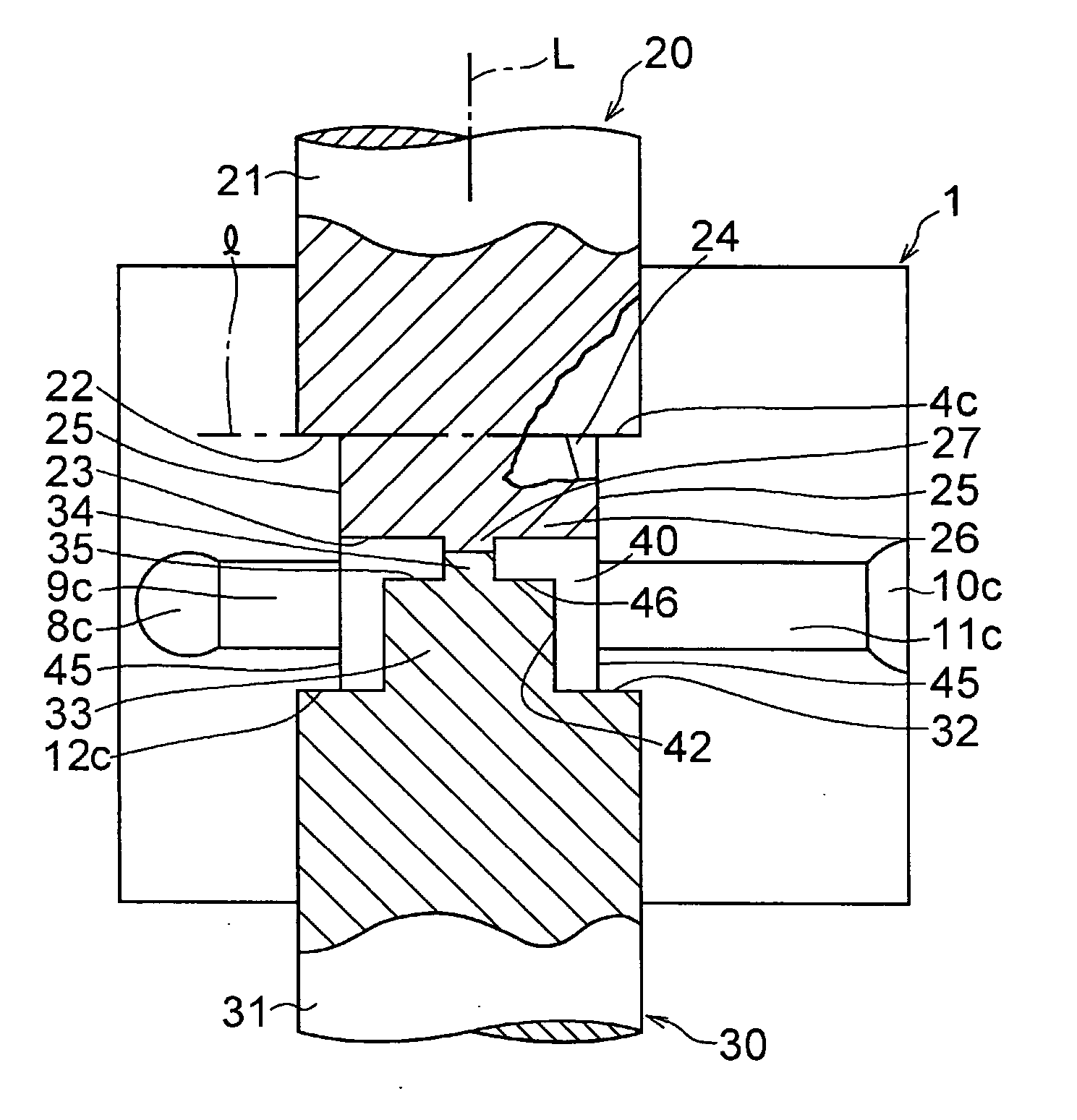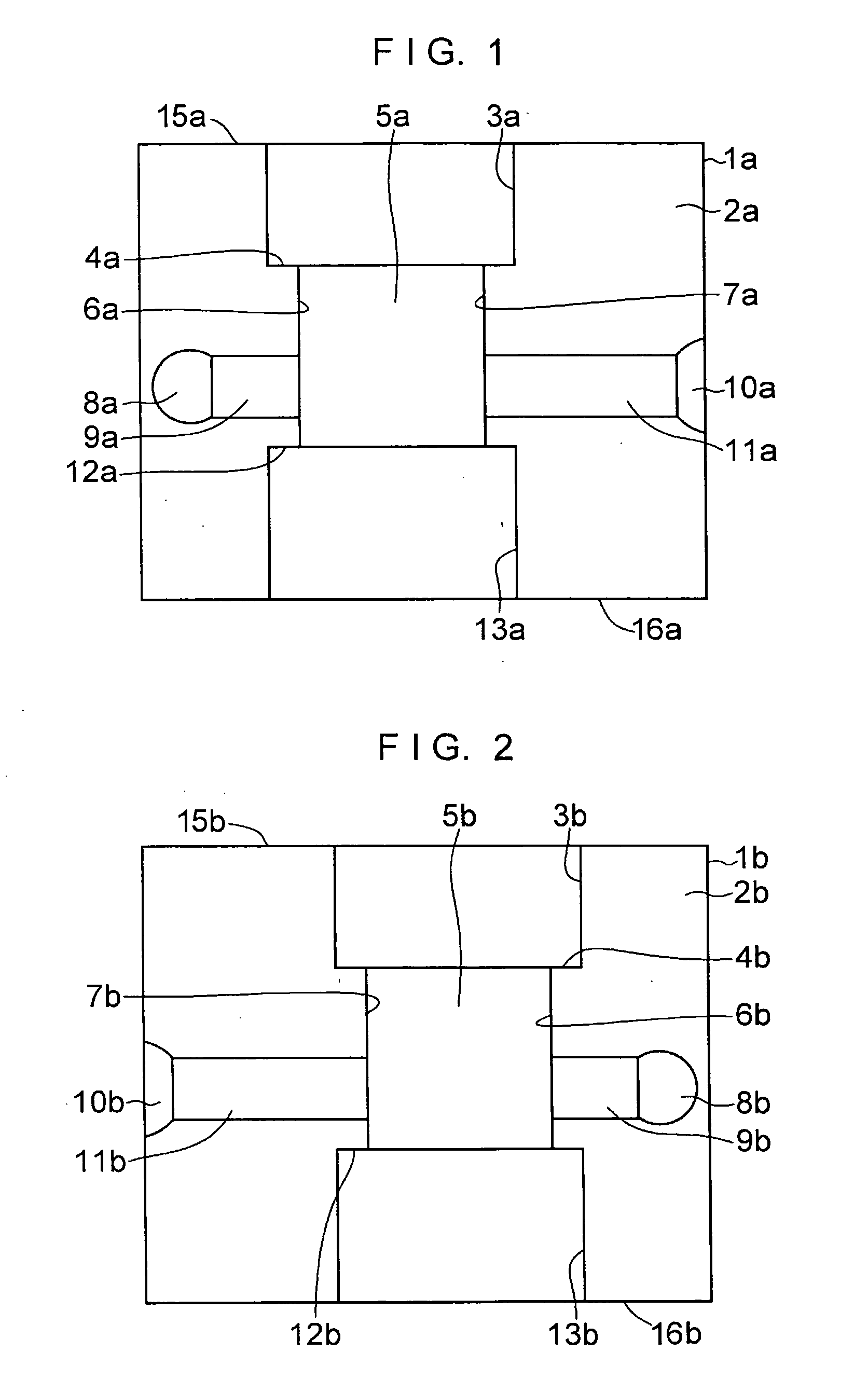Method of production rack guide base body in rack and-pinion-type steering device and rack guide
- Summary
- Abstract
- Description
- Claims
- Application Information
AI Technical Summary
Benefits of technology
Problems solved by technology
Method used
Image
Examples
Embodiment Construction
[0059] In FIGS. 1 to 6, a die 1 is formed by a lower die half 1a and an upper die half 1b which are split in two. As shown in FIG. 1, the lower die half 1a is comprised of a semicylindrical concave surface 3a for forming a semicylindrical concave portion which is formed in one surface 2a and is open in one end face 15a of the upper die half 1a; a semicylindrical concave surface 5a whose diameter is reduced relative to that semicylindrical concave surface 3a via an annular stepped portion 4a and which forms a semicylindrical concave portion of an intermediate portion; planar surfaces 6a and 7a formed in face-to-face relation to each other at both edges of that semicylindrical concave surface 5a; a recessed channel 9a with a rectangular cross section having one end communicating with the planar surface 6a and the other end communicating with a recess 8a constituting an overflow well; a recessed channel 11a with a rectangular cross section having one end communicating with the planar s...
PUM
| Property | Measurement | Unit |
|---|---|---|
| Diameter | aaaaa | aaaaa |
| Width | aaaaa | aaaaa |
Abstract
Description
Claims
Application Information
 Login to View More
Login to View More - Generate Ideas
- Intellectual Property
- Life Sciences
- Materials
- Tech Scout
- Unparalleled Data Quality
- Higher Quality Content
- 60% Fewer Hallucinations
Browse by: Latest US Patents, China's latest patents, Technical Efficacy Thesaurus, Application Domain, Technology Topic, Popular Technical Reports.
© 2025 PatSnap. All rights reserved.Legal|Privacy policy|Modern Slavery Act Transparency Statement|Sitemap|About US| Contact US: help@patsnap.com



